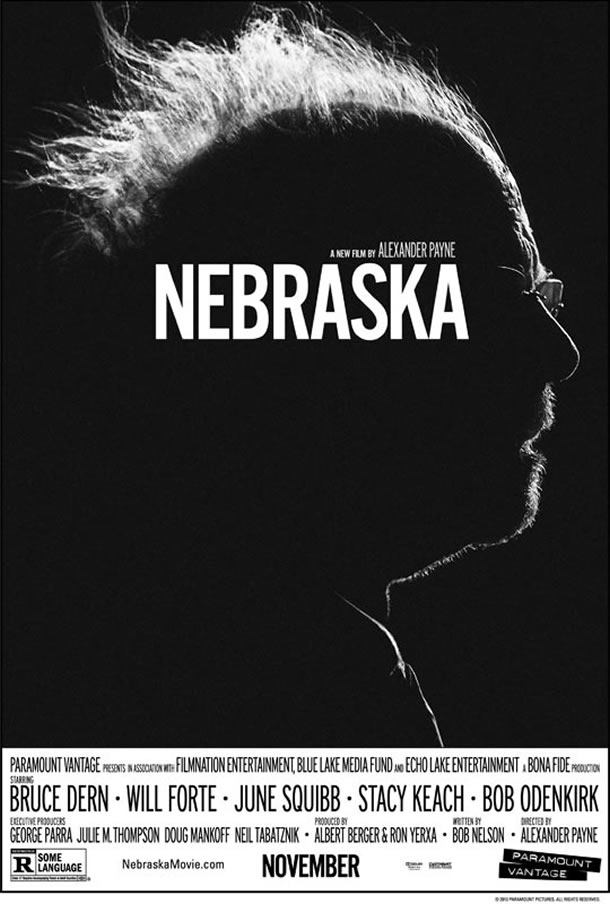Colorless film adds new light to cinema
January 24, 2014
“Nebraska,” the ode to small-town life, is the latest masterpiece from director Alexander Payne. The film follows an older alcoholic man (played by Bruce Dern) who makes his way to Nebraska from Montana to collect a million dollars that a mail ad claims he has won. Accompanying him is his son who is played by a completely serious and believable Will Forte, shedding the whole “MacGruber” act.
The most amazing part of the film is the performances from the older actors, especially from 77-year-old Dern and 84-year-old June Squibb. Dern is wonderfully funny, although his humor is mostly unintentional, as the main character who is losing his mind as well as his hearing and seeing. Essentially, he is dying slowly, which is why his family recommends putting him in a nursing home. This is somber because Dern’s character (Woody) is portrayed as a sincere man, always willing to stick his neck out for others.
On the other hand, there is the hilarious Squibb as Woody’s wife Kate, who chooses not to drive down to Nebraska with her husband because she thinks he is insane. Everything she says is given with an “I don’t care” attitude which coexists with her city-girl-in-a-small-town demeanor. She embodies the more realistic portrait of an old marriage: she loves her husband, but can’t help bringing him down or abasing him at every wrong thing he does.
Payne puts a lot of the film’s focus on the beautiful scenery in the drive between Montana and Nebraska seen through the eyes of Woody as he looks out the window in an utter state of fascination. When he is with his son, it seems as if Woody sees the beauty of nature as opposed to the gross city streets he walks down as he first attempts to make the trip by himself.
Oh, and did I mention that the entire film is in black and white? The film is shot so perfectly, even with a lack of colors. The audience can still paint a mental portrait, applying colors to the scenes that are not actually there. Truthfully, most of the colors that would be present would probably be drab, but the film still carries considerable weight in the age where color schemes are important in cinema.
For anyone who has ever bore witness to a small-town community, this is a fantastic film. The film pays close attention to what it feels like to have lived in a town where everyone knows everything about everyone and then to return many years later to find that the people have changed but the ideas haven’t. All of Woody’s friends are either dead or close to it at this point, which is evident as all of the bars he visits are run by new management who respond with quizzical looks as Woody asks “What happened to so-and-so?”
In “Nebraska,” the audience starts to care less about whether or not Woody actually won anything as the film progresses. Also the film puts focus on the basis of how a family falls apart when money is a problem, as the film takes in the economic struggle that the United States faces. Payne is showing the more city-like audience how the other half lives; and it’s a gritty, funny picture.













